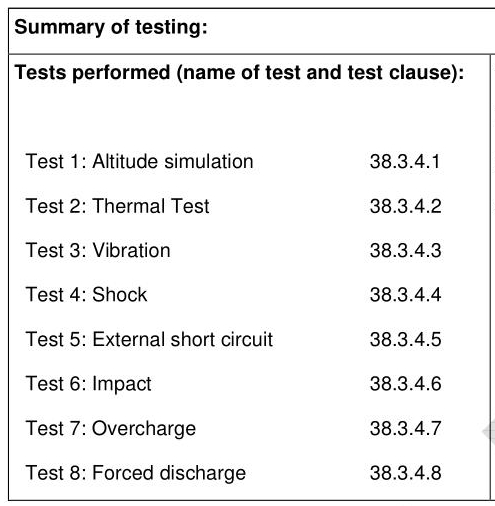One of the major risks associated with the transport of batteries and battery-powered equipments is short-circuit of the battery as a result of the battery terminals coming into contact with other batteries, metal objects or conductive surfaces. Therefore, their transport is subject to very strict rules, which have been internationally harmonised.
Any Lithium-Ion battery over 100 Wh is classified as CLASS 9 - MISCELLANEOUS DANGEROUS GOODS under the dangerous good regulations for transport by road (ADR), by air (IATA & IACO) and by sea (IMDG). Lithium-Ion batteries for pedelecs are more than 100 Watt-hours. As a result, their transport has to comply with these regulations. The UN number for Lithium-Ion batteries is 3480, if contained in or packed with equipment 3481.
These rules do not only concern transport of batteries for instance from manufacturer to dealer, but all transport except transport for private purposes. First of all, to ship goods in the CLASS 9 category means that the battery needs to be tested in accordance with the UN Manual of tests and criteria, Part III, subsection 38.3.1.
Procedures related to handling, packing and labelling
As for the transport of Lithium-Ion batteries, very specific and strict procedures related to handling, packing, labelling and shipping need to be followed.
If any company handles, packs and labels dangerous goods, such as Lithium-Ion batteries at their own premises, a trained "Dangerous Goods Advisor" is required onsite to oversee that this is done in full compliance with the rules and to declare the goods safe to travel. If you have no member of staff which has received the above training, you must hire a specialist company to handle, pack and label the goods and to fill out a "Dangerous Goods Note". It is compulsory for Dangerous Goods shipments to be accompanied by this document.
There are also weight restrictions for the transport of batteries. A package shipped by air containing a lithium battery may not exceed 10kg gross. The weight limit per package shipped by road or sea is 30kg gross.
Class 9 hazard label
If the lithium batteries are contained in the bicycle or packed with it, they are not required to have a Class 9 hazard label and there is no requirement for a Shipper's Declaration for Dangerous Goods for consignments of these batteries. Nevertheless, they must meet the packing instructions of the relevant transport regulations (ADR, IATA, IACO or IDMG). And, in the event of an incident involving these batteries, the incident reporting requirements apply.
Furthermore, only batteries that have successfully passed the test procedures of Part III, Sub-Section 38.3.1 of the UN Manual of Tests and Criteria qualify under this exception. This also applies to so-called "OEM" or "aftermarket" batteries. Any battery manufacturer or distributor should be able to provide documentation confirming that the batteries have been so tested.
There will be occasions where a manufacturer may wish to have a defective or damaged battery returned for analysis. However such batteries are prohibited from transport by air. This prohibition also applies to waste batteries and batteries being shipped for recycling or disposal. The rules for transport of defective, damaged and waste batteries by road or by sea are inconclusive.
